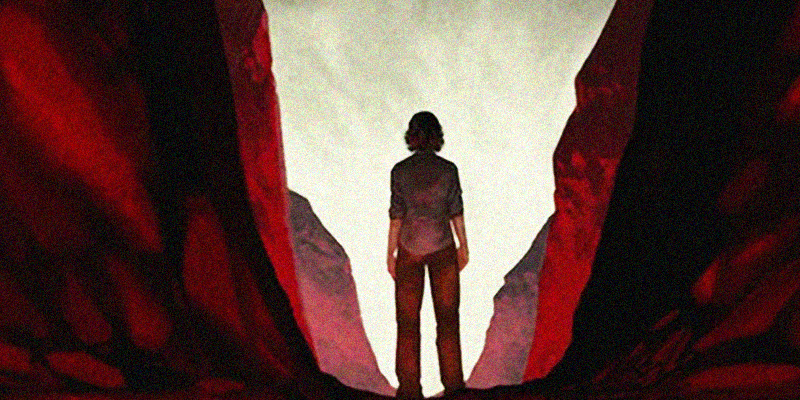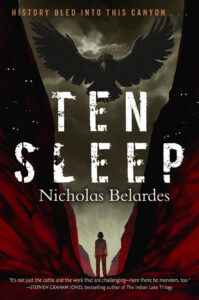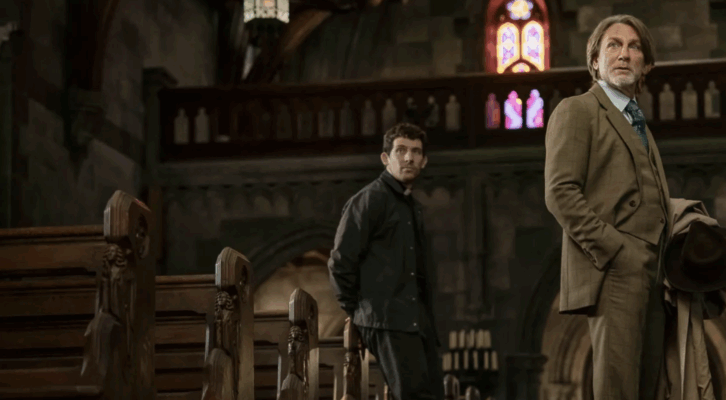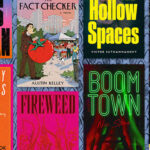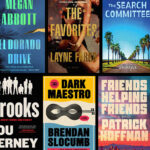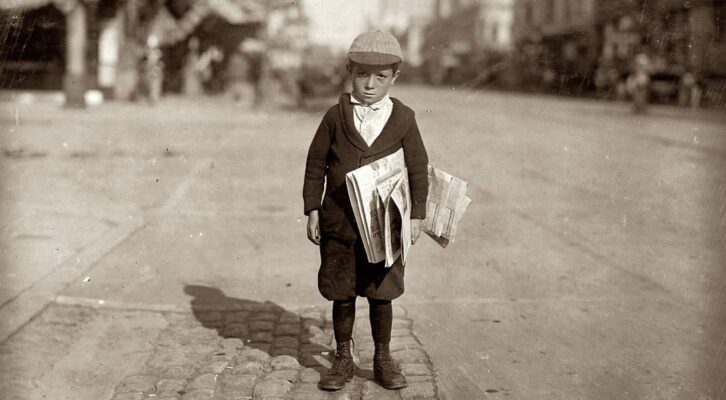We live in precarious, uncertain times—on the edge of a knife you could say. Horror writers willing to hold a mirror up to society need to pay close attention. Some of this is happening in the American West. Gun barrels have been aimed at everyday citizens standing against legalized human trafficking. And many detainees have been sent to faraway detention centers in jungles that few Americans have ever seen. Feels like we’re one trigger-happy officer or suicide bomber away from the U.S. military firing on its own civilians. I’m terrified of this real-life horror story playing out, because we know to what lows American soldiers have stooped in past wars, whether it’s an atrocity that famed war writer Tim O’Brien witnessed during the Vietnam War, or those war crimes buried in the war rubble of Afghanistan and Iraq. The real-world angry political rhetoric is there—Angelenos likened to savages in need of imprisonment and removal—all too reminiscent of the bloodied history of the American West that left lands ravaged and millions of Indians removed, buried, homeless, stateless, starved, and forgotten. However difficult to stomach, these types of connections are fodder for the horror writer willing to hold that mirror and spin tales of wights, vampires and mysterious will-o’-the-wisps with dark, just intentions.
Problem is, most people don’t read history, or weren’t students of history like me, or just might not care. One obstacle is we Americans get caught in a web of filial pietism, in false nostalgia for tropes of the American West’s gory saga, those romanticized tales of settler endurance and survival, which fall alongside savage and false depictions of indigenous peoples who stood in the way of settler dreams of homesteads on wide-open prairies. The horror writer has the power to declutter itself from such romance and throw a kaiju smack in the middle of a miles-long wagon train—if we’re willing to transform what has been fed to us through pop culture.
Remember all those old black-and-white westerns of the twentieth century? One-sided tales of land-grabbing white pioneers against all odds—Indians, weather, bears, floods, drought, etc. Their tales were often romantic notions wrapped in manifest destiny—that convenient catch phrase for a North American genocide that included land, flora and fauna, indigenous peoples, and sometimes, unwanted white families. Hollywood played by the rules of privileged white elite who justified their coast-to-coast imperialism and racism, and thus embedded westerns in myth and propaganda. The losers from such filmmaking became the people of color left out, or historically warped, while on set, the losers became those underpaid designers, builders, and especially those stunt men who broke their legs and backs while jumping off horses, cliffs, and through the tops of stagecoaches. The winners: powerful white men who controlled storytelling, who fed infrastructural racism to the masses through big screens and eventually, living rooms.
The characters themselves represented a white man’s way, or no way at all. “Now you understand,” John Wayne’s character in Big Jake (1971) says, “Anything goes wrong, anything at all . . . your fault, my fault, nobody’s fault . . . it don’t matter . . . I’m gonna blow your head off. It’s as simple as that.” Now imagine an undead bison saying something similar to Wild Bill Cody, right before she tramples him into oblivion. It would be a new tale of revenge, a hard truth—a buffalo truth.
Wikipedia lists seventy-one western genre films in 1957, with titles ranging from 3:10 to Yuma to War Drums. That was very year the Little Rock Nine played out for weeks on television, when all three channels showed white Americans spitting on nine black school children trying to get to class at Central Little Rock High School. Desegregation was in its early stages, and it played out like an ongoing Netflix horror series, while onscreen Indians were vilified as people to be feared, as people to be forced out, or dragged away. It’s a common thread even today towards all peoples of color—you’re not welcome here.
Historian Jodi Byrd has written, “The story of the new world is horror, the story of America a crime.” Part of the crime and horror of the American West is the idea of the frontier. To many, that word represents a place or an idea to be conquered, settled, tamed. Glorious pioneers and frontiersmen tamed the land, homesteaders tamed their hundred and sixty acres, and like many a mountain man, at times many of them killed at will, whether prairie dogs to near extinction, bison to near extinction, passenger pigeons to extinction, all while decimating Indian peoples.
“Frontier” becomes as awful a word as any, on par with the phrase injun country. Both reek of imperialism’s past and present, of America’s ongoing military state, and were recently used by American soldiers during the wars in Iraq and Afghanistan. Military analyst David Kaplan wrote that the Pentagon had at one time divided the planet into five area commands, similar to the way that the Indian Country of the American West had been divided in the nineteenth century. He goes on to say that for many in the military “the war on Terrorism was really about taming the frontier.”
Yet frontier might simply mean what it has always meant: removal. Settler colonists had the sole aim to extinguish any indigenous claims to frontier lands. The Indian Removal Act was meant to cleanse eastern America of indigenous peoples, or “extinguish the Indian claim” within eastern states, as Roxanne Dunbar-Ortiz tells us in An Indigenous Peoples’ History of the U.S. She reminds us that Andrew Jackson in his State of the Union address also said after the onset of the Act, that it was also time to go after and “acquire the countries occupied by the red men of the South and West.”
I’m also reminded of the Frontier Thesis that I had to study while a history graduate student. In 1898, Woodrow Wilson’s college bunkmate, Frederick Jackson Turner wrote his grandiloquent thesis, “The Significance of the Frontier in American History.” He claimed the frontier determined our collective American character. What is a frontier anyway but a delineation between us and that which lies outside our understanding? Even if a physical line between settled lands, how do we even define what comprises settled lands? It gets rather imperial—this idea of ownership we bring to such discussions of land or space in the American West. The horror writer is perfect to explore the grey area of what a frontier even was, to raise questions, to present dark, reflective tales. Turner said there would be new frontier savages to conquer, which brings us back to “others” in American wars. And since his theory never applied to blacks, Mexicans, etc., or women, that means, though long outdated, Turner’s thesis is fodder for the horror writer creating within such boundaries, to wield and say, no, my main character’s motivations are not decided by any frontier, but by supernatural forces amid the cataclysmic and traumatic leviathan that comprises the history of the American West.
This doesn’t change the fact that for some writers, frontier means a place of discovery, potential for a new home—a new opportunity awaits off world—we hear in Blade Runner, because breathable air and life-giving resources provide enough fantasyland-thinking to settle, prosper, trade, rule, and conquer. Thank goodness for sci-fi horror.
Historian Lawrence W. Levine wrote in his 1989 essay, “The Unpredictable Past,” that history “varies from generation to generation,” because we view the past “through the prism of a changing present.” And that’s us, right now, today, ever-changing, ever-reaching soothsayers and truthtellers with an undeniable permission to create. This means that when we write the American West, we have to consider why our indigenous werewolves stalk the Great Plains, why a vampire mountain man sucks the blood of bears, or why a Laura Ingalls Wilder shapeshifter might terrorize an Indian village. Once we have the aboutness, when the real west forms in our mind’s eye, then we can really begin to craft, to shine a light on both past and present. It’s then we can re-interpret, and re-imagine new outcomes, even if they currently don’t fare well.
***

